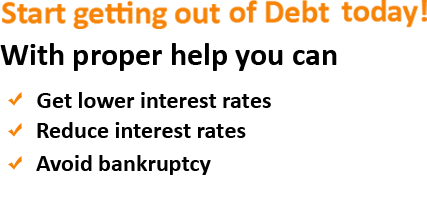Debt Management
 If you are struggling to pay off your debts, if you are overwhelmed by the number of creditors and the amount of your outstanding debt, EasyFinance.com can help you deal with this problem. Debt Management plan is a formal agreement between you and your creditors which enables you to turn all your debts into one single affordable payment.
If you are struggling to pay off your debts, if you are overwhelmed by the number of creditors and the amount of your outstanding debt, EasyFinance.com can help you deal with this problem. Debt Management plan is a formal agreement between you and your creditors which enables you to turn all your debts into one single affordable payment.
What are the benefits of applying for a Debt Management plan?
- You'll have to pay only one monthly payment you can afford.
- We'll negotiate lower interest rates with your creditors and instant loans for you.
- You'll regain control over your finances.
A Debt Management Plan (DMP) is a structured approach to repay outstanding debts over a period of time. If you have two loans totaling $2,500 ($1,000 and $1,500), here's a simple debt management plan:
1. Assess Your Finances:
- Income: Note down all your sources of income.
- Expenses: List all your monthly expenses.
- Savings: Calculate the amount you can save every month after deducting all expenses from your income.
- Determine the surplus: This is the amount left after all expenses, which can be dedicated towards repaying the debt.
2. Prioritize Debts: If these loans have different interest rates, prioritize repaying the one with the highest interest rate first, as it will grow faster over time. This method is called the "avalanche method".
3. Minimum Payments: Make sure you're at least covering the minimum payments for both loans. Any amount beyond that should be directed towards the higher-interest loan (if the interest rates differ).
4. Budgeting: Create a strict budget for the next few months or until the debts are cleared. Consider:
- Cutting non-essential expenses.
- Seeking additional income sources, if possible.
- Selling items you no longer need.
5. Setting Milestones: Break down your repayment into smaller, achievable milestones. For example:
- Aim to pay off 25% of the higher-interest loan.
- Next, target 50%, and so on.
6. Avoid Accumulating More Debt: While you're repaying these loans, try to avoid taking on more debt. This means not using credit cards recklessly or taking out additional loans.
7. Emergency Fund: Even as you focus on debt repayment, aim to set aside a small amount every month for emergencies. An unexpected expense can throw off your entire plan if you aren't prepared.
8. Review and Adjust: Review your progress monthly. If you find more money in your budget, increase your debt payments. If you’re falling behind, reassess your budget or look for additional ways to save or earn.
9. Consider Professional Help: If you find managing the debt overwhelming, consider seeking help from a credit counseling agency. They can help negotiate terms with lenders and provide guidance.
10. Celebrate Small Wins: Celebrate (frugally!) when you reach milestones. This keeps you motivated.
Sample Payment Plan: Assuming both loans have the same interest rate and you have a surplus of $300 every month:
- Pay the minimum on both loans.
- Direct the remaining balance of the $300 towards the $1,500 loan.
- Once the $1,500 loan is fully paid, divert all the $300 towards the $1,000 loan.
Remember, the faster you repay, the less you'll pay in interest. Always pay more than the minimum if you can. Adjust the above plan based on your specific loan terms, interest rates, and financial situation.
To get started, fill in the form. We'll analyze your income and expenditure to prepare a Debt Management plan adjusted to your circumstances. Start a new debt-free life!






